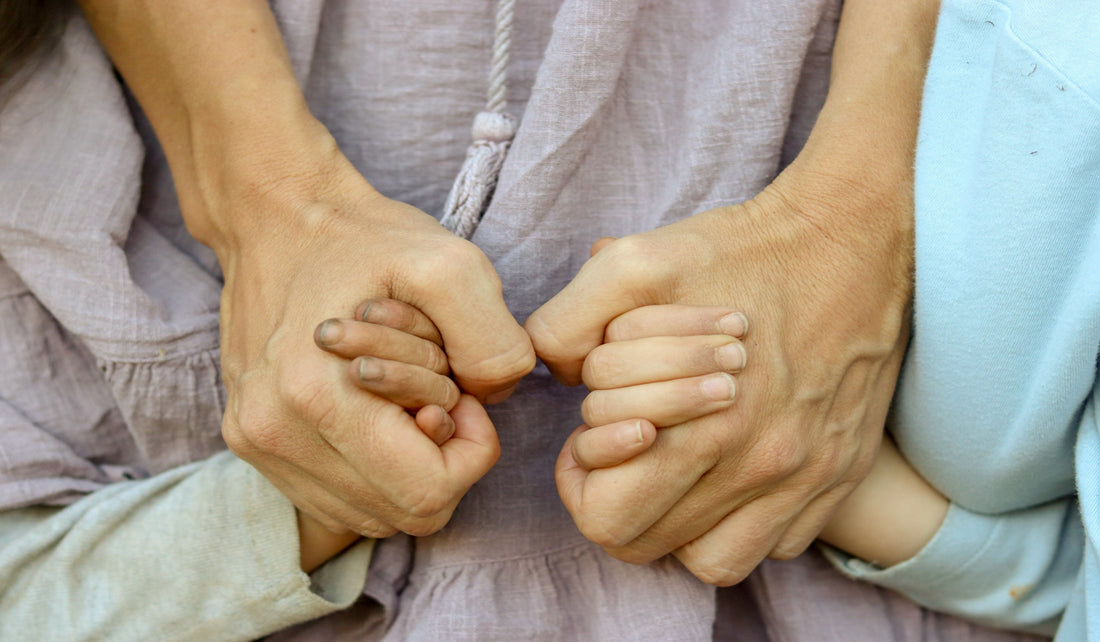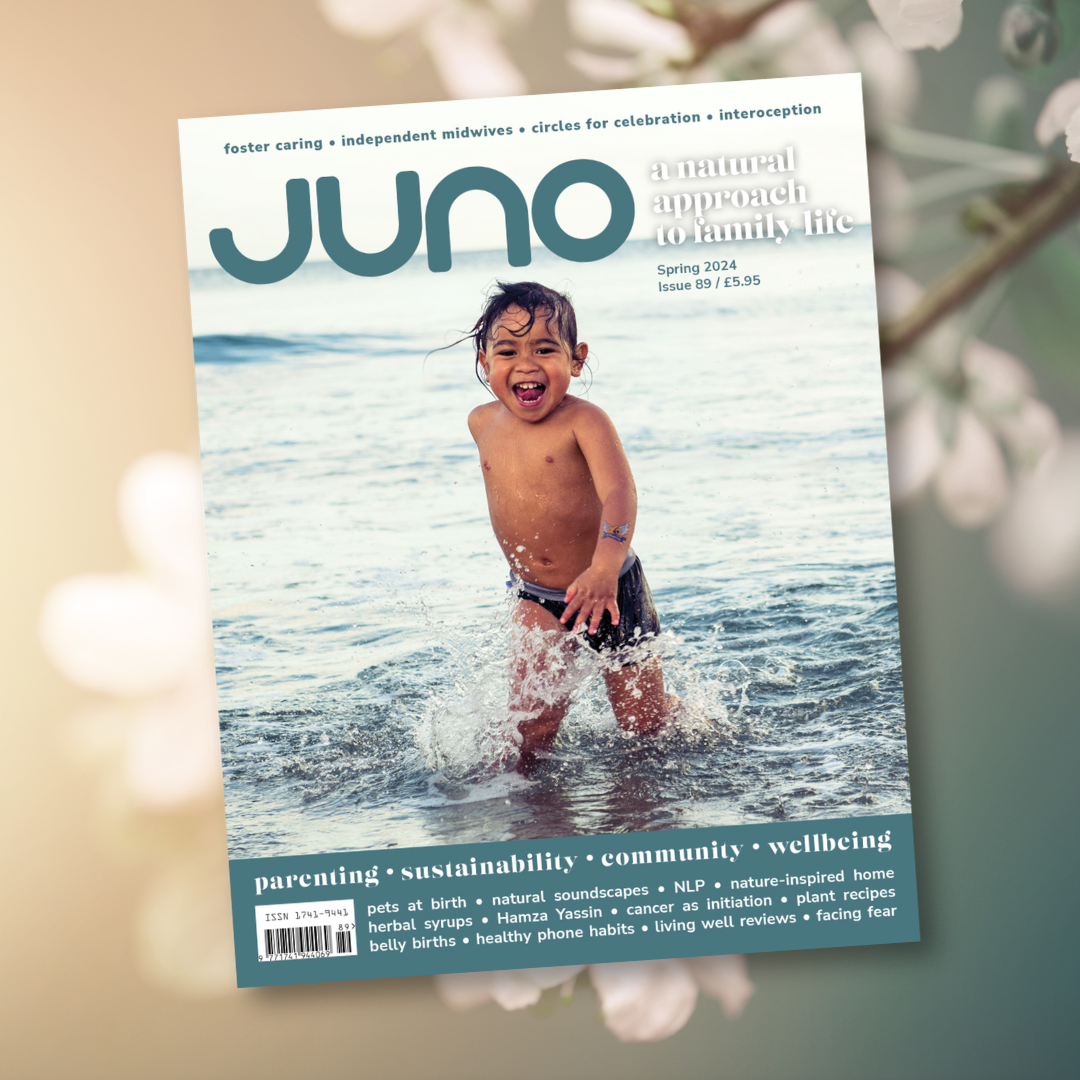Have you ever pondered that the word ‘valuable’ stems from the word ‘value’? It is worth considering the key family values that are the foundation of our homes, because what we focus on truly does grow. Our family values are valuable for us: they help us to live happy, healthy and connected lives.
My children are now 20 and 23 and, looking back at our key family values from toddlerhood to now, there have been three simple things: to be safe, to be healthy and to be kind (to each other and to belongings).
Rather than teaching kindness as right and wrong or reinforcing morals, we can model kindness and encourage it through simple everyday family activities in which it will naturally arise. I am really excited to share 10 family values in my new book, The Connected Family Handbook: Nurturing Warmth, Wonder and Kindness in Children. As well as warmth, wonder and kindness, there’s also move, nature, home, mealtimes, teamwork, adventure and celebration. The book includes hundreds of tips and activities for connected families with children from 2 to 10.
The following ideas from the Kindness chapter are mostly free, easy for parents and families to try, and are valuable in spreading kindness naturally, without lecturing! The word ‘kindness’ can be interchanged with the word ‘connection’, so look to the ‘I love you’ hand squeeze idea and gentle bedtime love tips. Children absorb messages through stories and verses, so try one or two of the verses below.
Have you ever thought about the different qualities of play? To create a tea party for dolls and stuffed toys is to share, to play doctors is to look after others, and to pack toys away so they do not get lost is to care. Even the way we care for bugs imbues a quality of kindness, and it is so easy to create a bug home: see below!
Have fun with the ideas in this feature, and I hope they bring “a little more kindness, a little less hurry, a little more laughter, a little less worry”.
Connection activity: three hand squeezes
This connection activity involves simply squeezing a child’s hand three times while saying ‘I love you’. It may only take three seconds, but it is a powerful way to express kindness and love to children. If you play this game often enough, it can become a special kind of shorthand, or secret language: a child will know for life that ‘three squeezes’ means ‘I love you’, even without words.
This thoughtful little gesture can be used at many points in everyday life, for example, in the morning upon greeting children, or at bedtime before going to sleep. Another idea is to all join hands as a family at the dinner table and give three squeezes together before eating. You can encourage children to use it with each other, for instance, to cheer up a sad or unwell sibling.
One day you may receive a spontaneous hand squeeze when you least expect it! Children may wish to play the same game with other family members and in turn with their we can model kindness and encourage it through simple everyday family activities own children when they’re older, sharing this simple kindness tradition.
“I was so happy when my child gave a fourth squeeze back, and when I asked what it meant, they said, ‘Forever – I love you forever.’” Prisha (parent)

Nature inspiration: creating a kindness tree
While you are out on a nature walk, search for a branch that you can use to create a special ‘kindness’ tree. It can be displayed somewhere children can see it.
You will need
- branch
- vase or pot
- sand or stones
- paper
- scissors
- paints or crayons
- heart-shaped cookie cutter or template
- string or wool
- glue
- Place your branch in a vase or pot. To stop the branch falling over, try adding some sand or stones in the bottom to hold it in place.
- Next, create some beautiful paper hearts to hang on the ‘tree’. You can cut these out from card or paper. A heart-shaped cookie cutter or cardboard template is useful to draw around. Younger children may enjoy painting pre-cut hearts while older children will enjoy the challenge of cutting hearts out themselves – you can judge your own child’s preferences and ability.
- Decorate the hearts using paints or crayons.
- Finally, place a length of looped string or wool between two hearts and glue them together. Allow your decoration to dry before hanging it on your tree. Alternatively, you can use a hole punch and tie on the wool or string.
Kindness heart activities
As well as hanging your paper hearts on the tree, you can use them in ‘kindness’ activities, like the ones suggested below.
Hiding hearts
Hide a heart under a child’s pillow, under their dinner plate, in their coat pocket or shoe for them to find when they have been kind. They may like to hang it on the kindness tree.
Thank-you hearts
Family members may like to award each other ‘thank you’ hearts throughout the day when they notice each other being kind.
Make amends
If a child is upset, a sibling can take a heart from the tree to ‘make amends’ or to simply help a child to feel better. They may give a heart instead of saying ‘sorry’ (parents too); some children may find it easier to give a heart than to apologise.
Verses and finger rhymes
Kind hands need warming,
Do you know how?
Rub them and kiss them
They are kind hands now!
(Hold and kiss the child’s hands or blow a kiss.)
Kind hearts are the gardens,
Kind thoughts are the roots,
Kind words are the flowers,
Kind deeds are the fruits.
Take care of your garden
And keep out the weeds,
Fill it with sunshine,
Kind words and kind deeds.
– Henry Wadsworth Longfellow
You could write this out on a lovely card.

Easy craft: simple bug houses
By creating a home for insects to live in, you are being kind to all creatures great and small! You can do this activity at any time of the year, but it can be a particularly good one to make with children in the autumn, before insects start to hibernate for the winter.
You will need
- natural found objects such as sticks, bark, pine cones, seed pods, bamboo and straw
- string
- plastic bottle or cardboard milk carton with the top and bottom cut off (optional)
- Arrange the materials you have by size – you can carefully break your sticks to make them a little smaller. Gather them all into a bundle.
- Tie the pieces together tightly with string, wrapping it several times around the bundle. If you are not using a bottle or milk carton to put your bundle in, make sure the string is firmly wrapped all the way around to hold the sticks in place. If you plan to hang your bug house, you can tie some string around the top with a loop as well.
- If you are using a bottle or carton, push your bundle into the centre and firmly pack leaves, grass and more twigs in around the edges to hold it in place.
- Carefully place your bug house somewhere safe outside, such as beside a sturdy log where it won’t get knocked over. You could make one house for on the ground and one to hang from a tree to see if different bugs move in.
- Don’t forget to check it regularly to see if you have any visitors!
The best way for carers and parents to teach children kindness is to be kind ourselves. Children watch, imitate and model the way we treat others – even bugs!

Calming bedtime: gentle songs and touch
When we sing to young children at bedtime and stroke their heads softly, we model kindness. Children absorb the feeling of the precious gift of touch, and learn to give loving touch back to the world in the future, even years later.
Model kindness at bedtime with a nightly lullaby and gentle touch. You might make up a simple song about all the people (and animals) in the world that love the child, while drawing ‘love hearts’ on their cheeks or other parts of the body.
“I always sing a list of all the people that love my children while stroking their heads. Today I walked in and one child was singing the same song to the dog, while stroking his ears!” Sam (parent)
Three jars
As you reflect back on your day with children, imagine filling three imaginary jars: one for positive and loving experiences; one for neutral moments; and one for negative and tricky times. Make sure the ‘kind’ one is the fullest jar each day to keep life in a happy balance.
Although all the ideas bring elements of kindness, there are moments in family life when we may need to repair after hurt feelings between siblings, or between parent and child. The ‘kindness tree’ activity encourages making amends ready for a new beginning. There is no such thing as a perfect parent, but the ‘three jars’ reflection at the end of each day will help to keep family connections strong. What do you value as truly valuable? This question is worth asking. The ideas will nurture family life.
____
Lou Harvey-Zahra is an experienced parenting coach and the author of holistic parenting books. Lou runs conscious parenting workshops, online parenting courses, and presents to parents and teachers across the globe. Her books include Growing Children, Thriving Children; Happy Child, Happy Home; and Creative Discipline, Connected Family. She is a mother to two wonderful grown-up children and currently lives in Melbourne, Australia. You can sign up to Lou’s free newsletter at happychildhappyhome.com.
The feature includes edited extracts from The Connected Family Handbook: Nurturing Kindness, Warmth and Wonder in Children by Lou Harvey-Zahra, photography by Danielle Harbison, published by Floris Books.
Published in issue 79. Accurate at the time this issue went to print.



